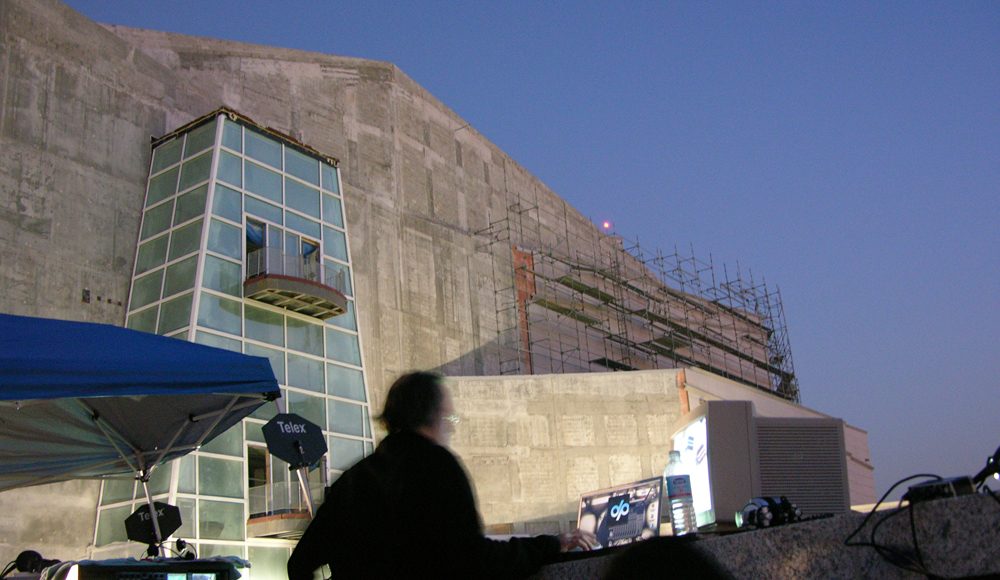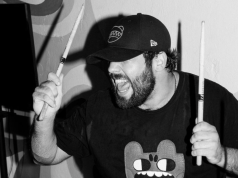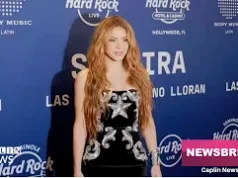Venezuelan artist Gustavo Matamoros, is a stalwart in South Florida’s avant-garde scene when it comes to augmented sound. Now, after winning The Knight Foundation’s Art Challenge — a grant-based competition held by the Knight Foundation in Miami, Akron and Detroit — he has decided to compose a four-part series of live exhibitions.
Matamoros is a founder of The Subtropics festival, a product of the South Florida Composer’s Alliance, which celebrated its 25th anniversary in 2021. The experimental music festival has featured hundreds of international composers over the years.
“I myself am very interested in the idea of recorded sound,” says Matamoros. “Once you capture a sound, it becomes raw material that can be controlled.”
Matamoros, born in Caracas, is a digital virtuoso who grew up programming analog synthesizers in an era where avant-garde music began pushing sonic boundaries.
This fall, he and fellow composer David Dunn created “Indivisibles,” a sound-art album accompanied by animated projections. The piece debuted recently at the Deering Estate, where Matamoros is a year-long resident.
“For me, it started as an explanation of these little audibles,” says Matamoros. “Each one of them is an event. Something that is integral.”
“Indivisibles,” is a symphonic arrangement consisting of amplified raw material. Matamoros points to Frenchman Pierre Schaeffer’s musique concrète as a source of inspiration for the project.
Schaeffer’s work consists of digitally altered compilations of organic sound. Like “Indivisibles,” Schaeffer’s work manipulates the pitch, reverberation and length of naturally occurring sound to make it more artistic.
For example, track number six, “Cocktail Hour in Little Havana,” uses an electronic piano to mimic the rhythm of human conversation recorded in Miami’s Little Havana neighborhood.
The soft piano keys struggle to keep up with the natural coherence of human conversation.
“The piano is trying to imitate exactly what everybody is doing. It is actually extracting the notes out of the conversation,” says Matamoros. “If I just played you the piano alone you would probably say ‘Wow what a weird sound!’ But when you understand that those things are totally natural…”
Track number seven, “Thresholds and Fragile States,” is a robotic live performance piece.
“These are analog circuits which are generating sound based on chaos theory,” says Dunn. “You change one thing, you change the other eight variations in unpredictable ways.”
The circuits are chaotically entangled, meaning they are co-dependent and susceptible to changes based on the actions of the other.
The audio is visually complemented by cover art from Ralph Provisero and projected animations by Freddy Jouwayed, largely a product of their musical interpretation.
PIN PAN PUN, the second part of the series, was held on September 8.
The title is entirely up to the spectator’s interpretation. Matamoros simply states that he named all the pieces to represent a progressive continuum.
The act was preceded by an introductory foreword titled “From the Book of Modern Sorcery,” by collaborator José Hernández Sánchez which involved a spiritual cleansing with a rubber chicken.

The intermedia event ran like a play. It consisted of six acts combing sound with moving pictures. The third act,“I Saw a Light in my Chamber,” saw Gustavo Matamoros playing a musical saw with a violin bow.
Matamoros then used the same saw to cut off a piece of wooden plank in real time.
Audience reception was mixed, with many of the spectators not knowing whether to clap after some of the acts.
“It was a super interesting experiment,” says Tony Fernandez, a part-time professor at New World School of the Arts in Miami. “It engages your senses and you have to give it a chance.”
Much like “Indivisibles,” all the pieces in PIN PAN PUN were both sonically and visually stimulating. The holographic lightning made for an intimate listening experience that filled the room with life.
Lukas Ligeti, a sound artist from Austria, thinks the exhibition successfully managed to display the natural variations of sound through human manipulation.
“Very often with sound art, it sticks to one concept. It is interesting to see a concert program with shorter pieces that investigate different types of sounds in various conditions,” says Ligeti. “I think people are humanly organizing phenomena of nature.”
The final installation in Matamoros’s exhibition, “And Sometimes There is More,” will be shown on September 22 at the Deering Estate Theatre.
Learn more about the Subtropics here.
































